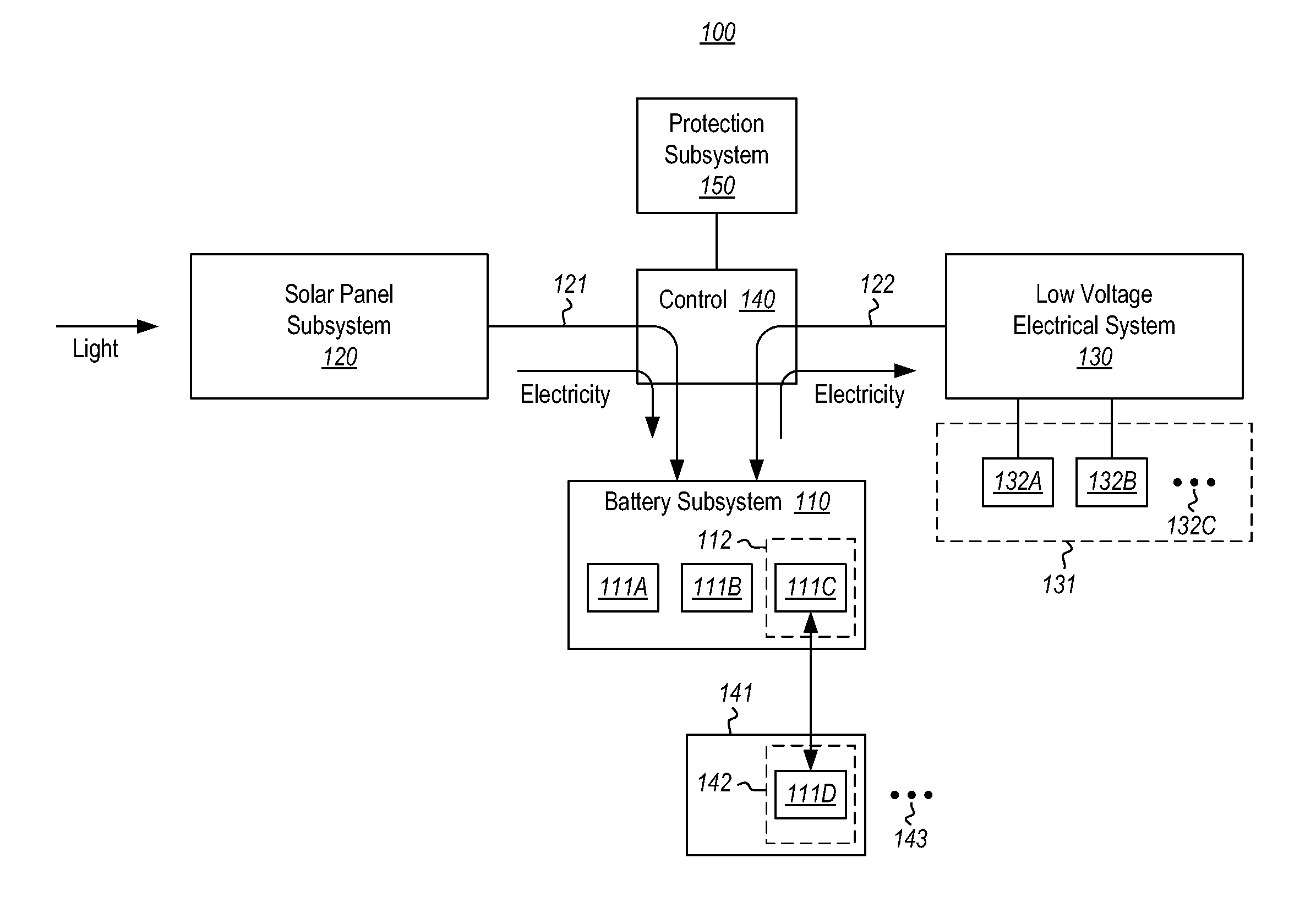Electric Energy Deployment Model for Solar System
a solar system and solar energy technology, applied in emergency power supply arrangements, dc source parallel operation, greenhouse gas reduction, etc., can solve the problems of expensive protection systems, lost size-benefit-effects of isolated systems, and low population density, and achieve the effect of low population density
- Summary
- Abstract
- Description
- Claims
- Application Information
AI Technical Summary
Benefits of technology
Problems solved by technology
Method used
Image
Examples
Embodiment Construction
[0011]In accordance with at least one embodiment described herein, an isolated centralized solar electric system (also referred to as the “isolated station” herein) is described. An example embodiment of the isolated station is illustrated in FIG. 1 as element 100. The isolated station is stationary and mid-sized. In this context, a “mid-sized” power station is a stationary power station capable of generating power somewhere in the range of from 5 kilowatts to 500 kilowatts. The isolated station is not connected to a large-scale power grid that spans portions of nations, and even internationally. Instead, the isolated station is coupled to a smaller local power grid.
[0012]Thus, while the mid-sized isolated station is similar to a centralized station in that it is stationary, the mid-sized power station is much different than the centralized station in that the isolated station is orders of magnitude smaller and is coupled only to a local power grid.
[0013]The isolated centralized sol...
PUM
 Login to View More
Login to View More Abstract
Description
Claims
Application Information
 Login to View More
Login to View More - R&D
- Intellectual Property
- Life Sciences
- Materials
- Tech Scout
- Unparalleled Data Quality
- Higher Quality Content
- 60% Fewer Hallucinations
Browse by: Latest US Patents, China's latest patents, Technical Efficacy Thesaurus, Application Domain, Technology Topic, Popular Technical Reports.
© 2025 PatSnap. All rights reserved.Legal|Privacy policy|Modern Slavery Act Transparency Statement|Sitemap|About US| Contact US: help@patsnap.com



